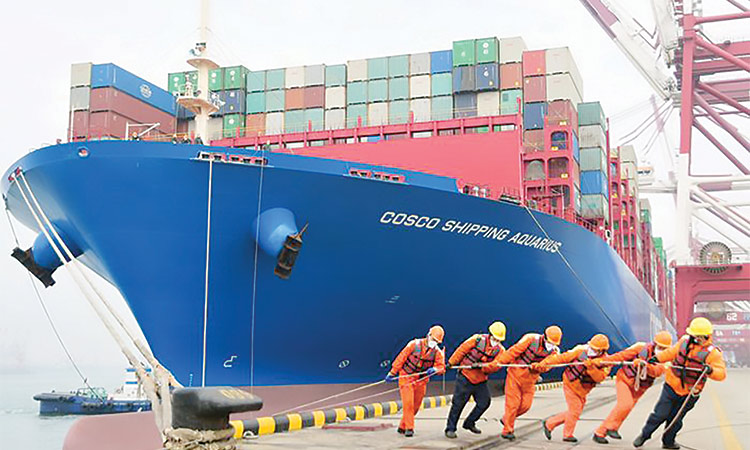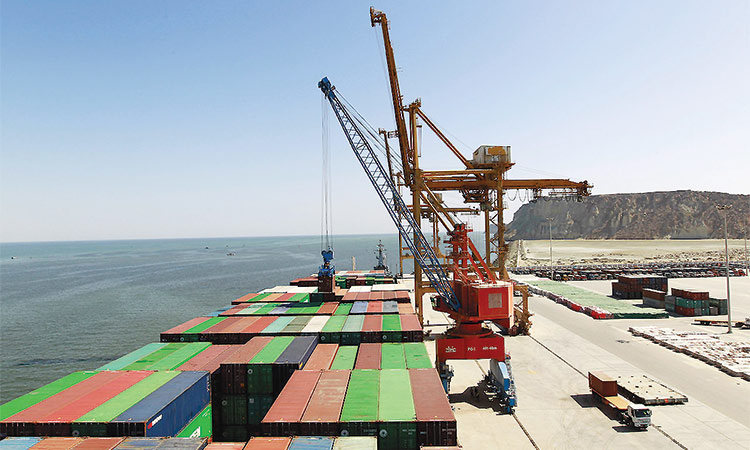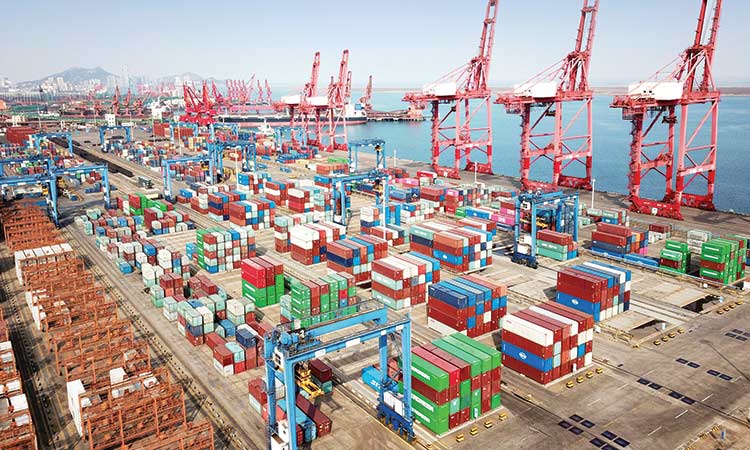China’s exports fall most in three years as global economy struggles

Workers roping a container ship at a port in Qingdao, Shandong province, China
Imports also fell more than expected, down 6.8 per cent, customs data showed on Thursday. A Reuters poll of economists had forecast exports to have shrunk 9.5 per cent and imports to have fallen 4.0 per cent.
Momentum in China’s post-pandemic recovery has slowed after a brisk pickup in the first quarter, with analysts now downgrading their projections for the economy for the rest of the year as factory output slows in the face of persistently weak global demand.
Lv Daliang, a spokesperson for the General Administration of Customs, blamed the poor export performance on “a weak global economic recovery, slowing global trade and investment, and rising unilateralism, protectionism and geopolitics,” in comments at a news conference in Beijing.
Policymakers are now reckoning with the prospect of prolonged slower growth in the world’s second-largest economy of around just 3 per cent annually, according to economists’ forecasts. That is less than half the rates typical throughout recent decades and creates the feel of an economy in recession.
Chinese Premier Li Qiang, who took up his post in March, has talked a good game on rolling out policy measures to boost demand and invigorate markets, but few concrete steps have been announced and investors are growing impatient.
“Looking ahead, the headwinds facing the external sector remain strong, which calls for policy support towards domestic demand,” said Zhou Hao, economist at Guotai Junan International.
South Korean shipments to China, a leading indicator for China’s imports, fell 19.0 per cent last month, the smallest decline since October but suggesting demand for semiconductors and other components used to manufacture electronic goods remains weak. Demand for raw materials also showed signs of weakness, with copper imports down 16.4 per cent in June compared with a year earlier.
Chinese factory activity has been shrinking in recent months, while consumer prices teetered on the edge of deflation in June and producer prices fell at their fastest pace in more than seven years.
The government has set a modest GDP growth target of around 5 per cent for this year, after badly missing the 2022 goal.
China’s coal imports edged higher in June, after dipping in the prior two months, customs data showed on Thursday, as utilities sought high-quality coal from overseas suppliers to replenish inventory at the start of the peak electricity demand season.
The world’s top coal consumer bought 39.87 million metric tonnes of coal last month, up from 39.58 million in May, data from the General Administration of Customs showed.
Coal imports of 221.93 million metric tonnes over the first half almost doubled from a year ago to hit a record.
Homes have stepped up use of electricity for cooling as China has entered a two-month peak summer demand season and utilities boosted procurement of high-quality thermal coal to improve the efficiency of power generation. Australian thermal coal with energy content of 5,500 kilocalories has been cheaper than domestic coal this year and now costs about 50 yuan ($6.98) less per metric tone, traders said.
However, mounting inventories at power plants and ports have capped coal import growth. Stocks over the last four months have been significantly higher than last year, largely because of sluggish demand from industrial users and increased supplies.
Some coal miners have called for a halt to imports as a flood of cheaper overseas coal has prompted power generators to make spot market purchases rather than buying from domestic miners.
The scorching heatwave across China since late June boosted electricity demand for cooling and eased some inventory pressures.
China’s crude oil imports in June jumped 45.3 per cent on the year to the second-highest monthly figure on record, customs data showed on Thursday, with refiners building up inventories despite tepid domestic demand.
Crude imports in June totalled 52.06 million metric tonnes, or 12.67 million barrels per day (bpd), the data from the General Administration of Customs showed.
It was a substantial increase on the 8.72 million bpd imported in June last year, when the economy was battered by widespread COVID-19 lockdowns.
Crude imports also held their upward momentum on a month-on- month basis, up 4.58% from May’s 12.11 million bpd.







